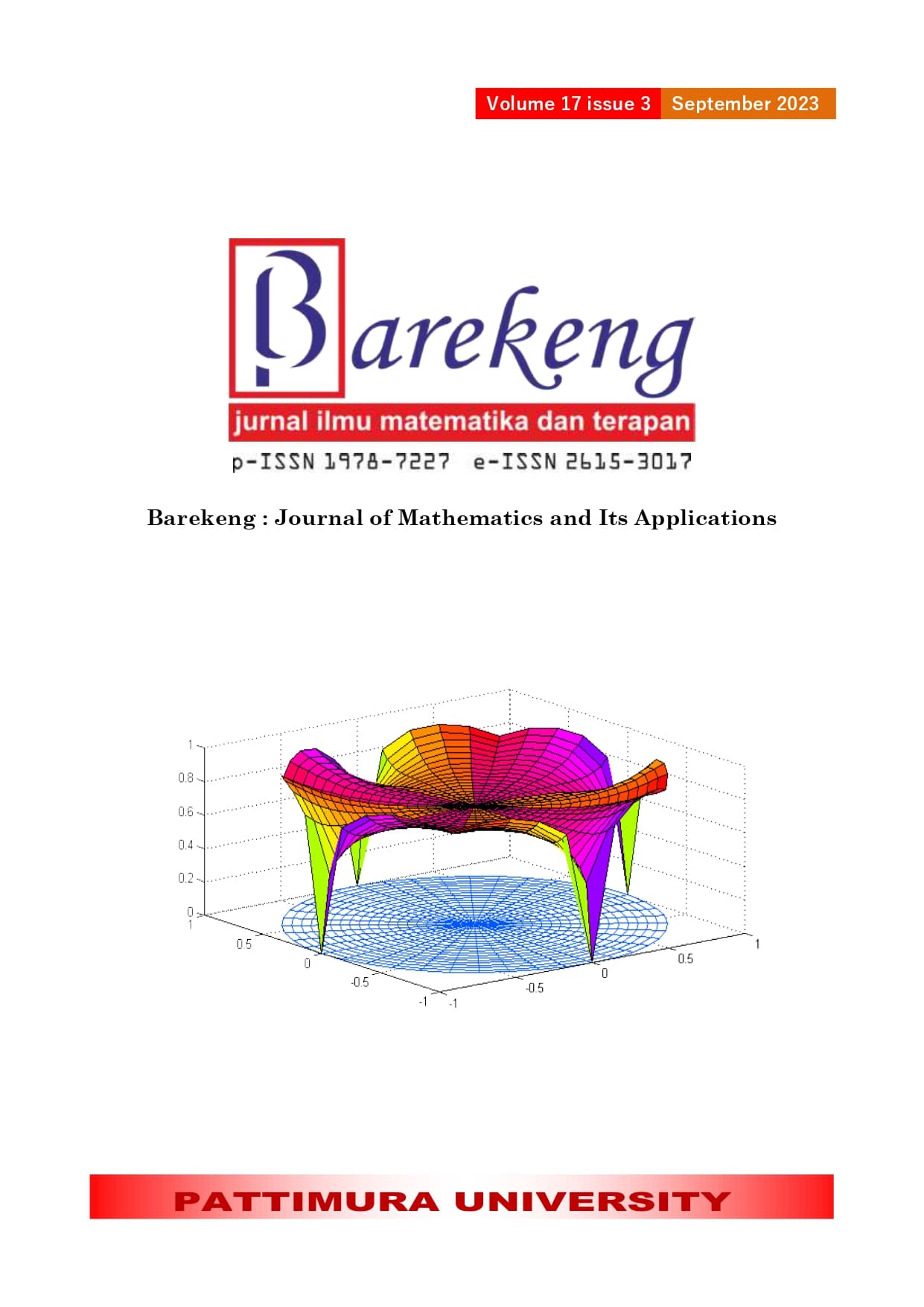JCI MODELING IN INDONESIA BASED ON INDUSTRIAL PRODUCTION INDEX WITH LOCAL POLYNOMIAL ESTIMATOR APPROACH
Abstract
The industrial sector is the leading sector that contributes the most to Indonesia's economic growth. Industry can be caused by various factors, one of which is the Jakarta Composite Index (JCI). Indonesian stock prices have a high variance that requires proper modeling. Therefore, this study uses a local polynomial nonparametric regression approach. This study aims to estimate and obtain the best JCI model based on the production index of large and medium industries using a local polynomial estimator and also knowing the accuracy of the JCI model based on the production index of large and medium industries. The data used in this study is secondary data using production index data for medium-large industries and data on the composite stock index in Indonesia in the form of Time series which were obtained through the Central Statistics Agency Publication website on the page www.bps.go.id. JCI modeling in Indonesia based on the production index of large and medium industries is most effective on local polynomials with polynomial degree two which obtains an optimal bandwidth of 7,8795 with a minimum Cross-Validation (CV) value of 163170,3 and a Mean Absolute Percentage Error (MAPE) value of 9,1%. From the MAPE value it is said that the model is good for making future predictions.
Downloads
References
Erfin, “Pertumbuhan Produksi Industri Manufaktur Besar dan Sedang (IBS) dan Industri Mikro Kecil (IMK),” Disperindag, Daerah Istimewa Yogyakarta, 2017.
F. Shabirina, “Analisis Pengaruh Nilai Tukar, Investasi Asing Langsung, Dan Nilai Ekspor Terhadap Pertumbuhn Output Sektor Industri Pengolahan Indonesia Tahun 2010 - 2019,” Jurnal Ilmiah Universitas Brawijaya, vol. 9, no. 2, 2021.
M. I. Firzada, “Hubungan Realisasi Pokok Lelang Terhadap Indikator Pergerakan Ekonomi Gross Domestic (GDP),” Kemenkeu RI, Jakarta, 2021.
A. Mansoorian and M. Mohsin, “Real asset returns, inflation and activity in a small, open, Cash-in-Advance economy,” Journal of International Money and Finance, vol. 32, pp. 234-250, 2013.
O. Hee-Seok, “Introduction to Linear Regression Analysis, 5th edition by MONTGOMERY, DOUGLAS C., PECK, ELIZABET A., and VINING,G. GEOFFREY,” in Biometrics, International Biometric Society, 2013, p. 1087.
N. Chamidah, B. Zaman, L. Muniroh and Lestari B, “Designing Local Standart Growth Chart of Children in East Java Province Using a Local Linear Estimator,” International, vol. 13, no. 1, pp. 45-67, 2020.
Y. Wang, D. Zhang and L. Zang, Pulsar Profile Denoising using Kernel, Optik, 2017.
N. Chamidah, K. Gusti, E. Tjahjono and B. Lestari, “Improving of classification accuracy of cyst and tumor using local polynomial estimator,” TELKOMNIKA, vol. 17, no. 3, pp. 1492-1500, 2019.
J. J. Faraway, Extending the linear model with R: generalized linear, mixed effects and nonparametric regression models, Chapman and Hall, 2016.
D. J. Henderson and A.-C. Souto, “An introduction to nonparametric regression for labor economists,” Journal of Lanor Research, vol. 39, no. 4, pp. 355-382, 2018.
V. Fibriyani and N. Chamidah, “Prediction of Inflation Rate in Indonesia Using Local Polynomial Estimator for Time Series Data,” Journal of Physics: Conference Series, vol. 1776, 2021.
L. Khalid, S. Suparti and A. Prahutama, “Pemodelan Regresi Nonparametrik Data Longitudinal Menggunakan Polinomial Lokal (Strudi Kasus: Harga Penutupan Saham pada Kelompok Harga Saham Periode Januari 2012 - April 2015),” Jurnal Gaussian, vol. 4, no. 3, pp. 527-532, 2015.
S. Suparti and A. Prahutama, “Pemodelan Regresi Nonparametrik Menggunakan Pendekatan Polinomial Lokal pada Beban Listrik di Kota Semarang,” Media Statistika, vol. 9, no. 2, pp. 85-93, 2016.
N. Chamidah and B. Lestari, “Estimation of Covariance Matrix Using Multi-Response Local Polynomial Estimator for Designing Children Growth Charts: A Theoretically Discussion,” Journal of physics: Conference Series, vol. 1397, no. 1, 2019.
M. J. Moreno, P. A. Pol, S. A. Abad and C. B. Blasco, “Using the R-MAPE index as a resistant measure of forecast accuracy,” Psicothema, vol. 25, no. 4, pp. 500-506, 2013.
Copyright (c) 2023 Rizky Ismaul Uyun Hidayat, Juan Krisfigo Prasetyo, Berliani Larasati, Mutiara Aisharezka, Nur Chamidah

This work is licensed under a Creative Commons Attribution-ShareAlike 4.0 International License.
Authors who publish with this Journal agree to the following terms:
- Author retain copyright and grant the journal right of first publication with the work simultaneously licensed under a creative commons attribution license that allow others to share the work within an acknowledgement of the work’s authorship and initial publication of this journal.
- Authors are able to enter into separate, additional contractual arrangement for the non-exclusive distribution of the journal’s published version of the work (e.g. acknowledgement of its initial publication in this journal).
- Authors are permitted and encouraged to post their work online (e.g. in institutional repositories or on their websites) prior to and during the submission process, as it can lead to productive exchanges, as well as earlier and greater citation of published works.






1.gif)



